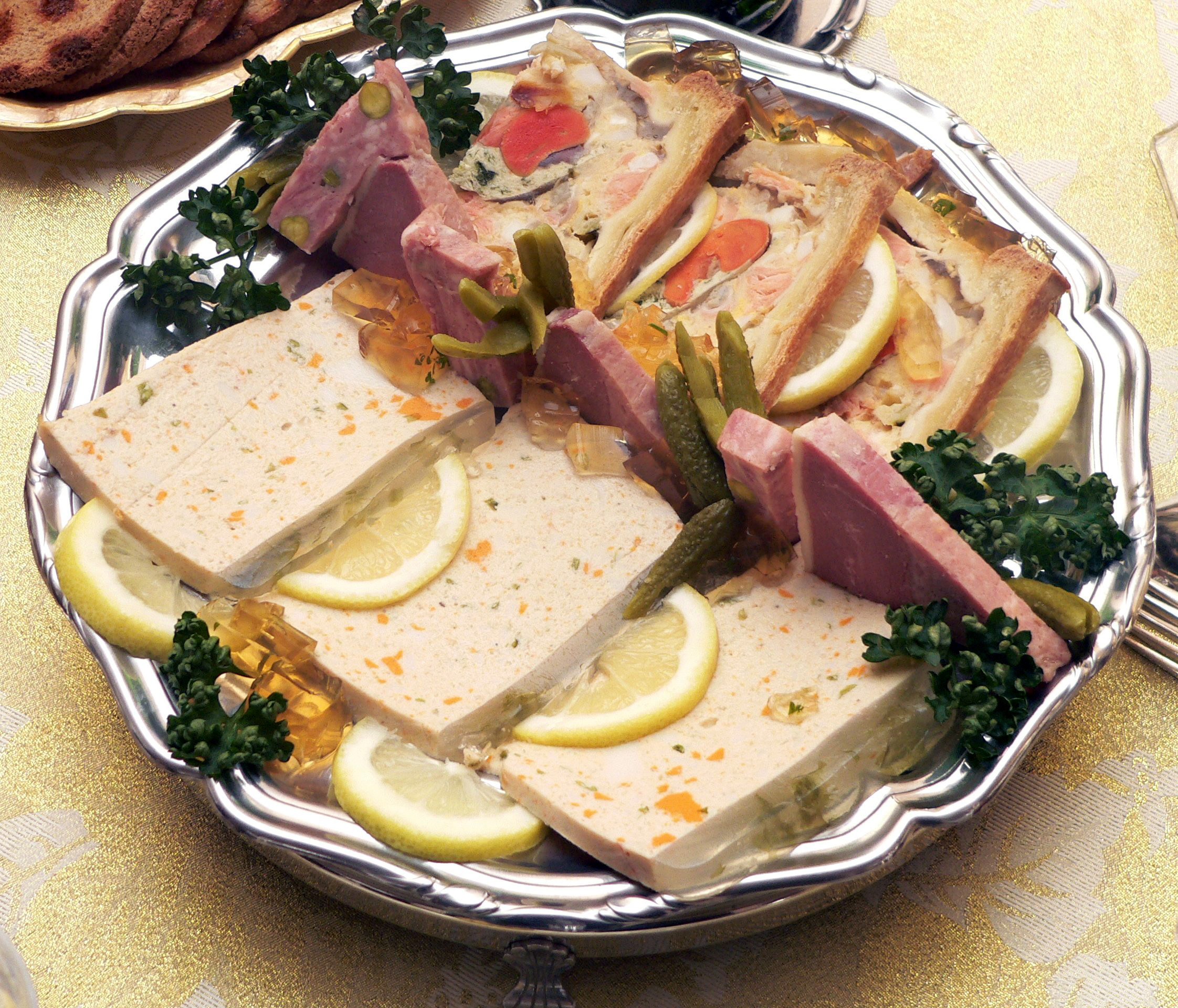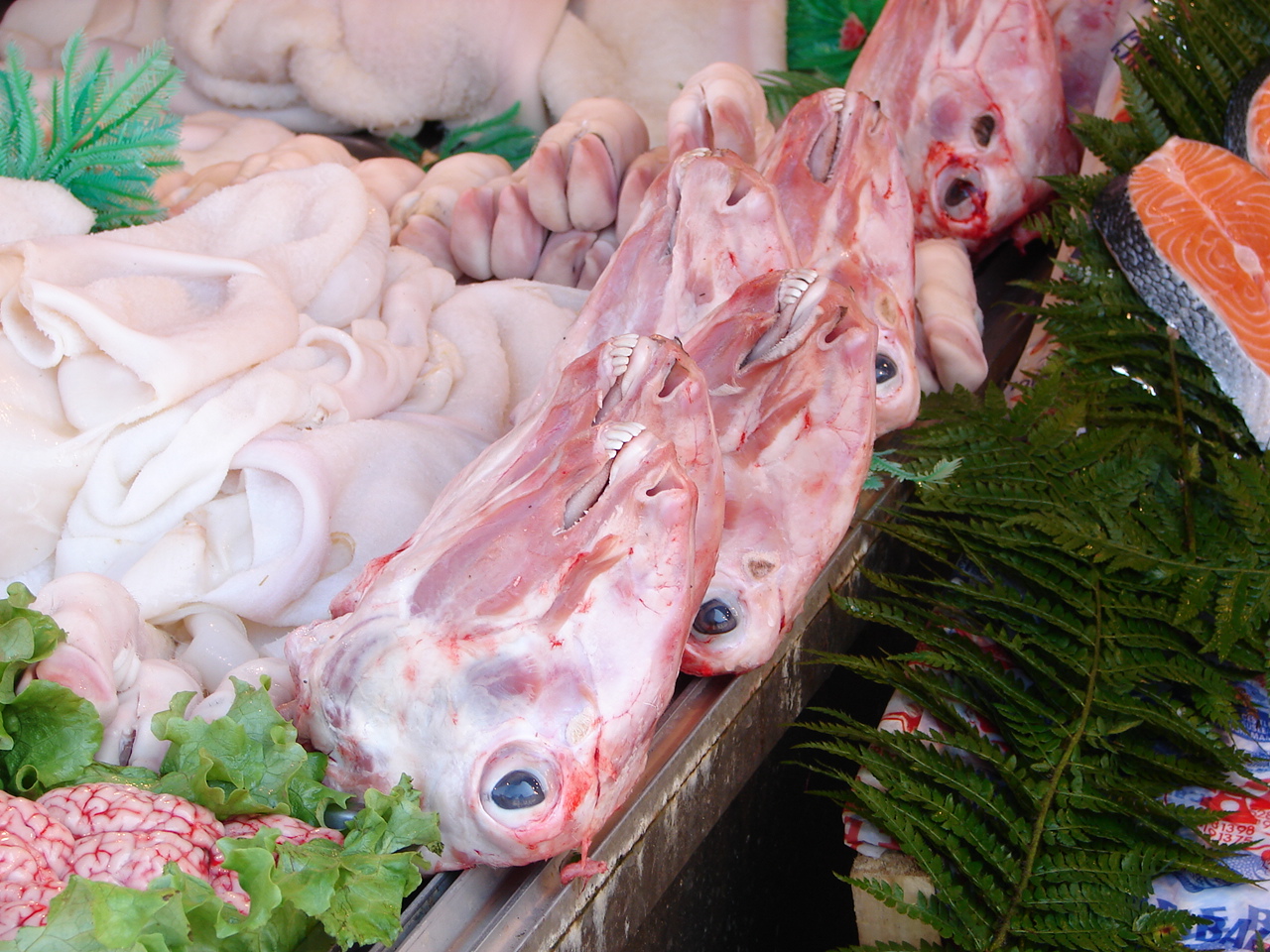|
е§Ђе¶їиВЇзЙЗ
''Fuqi feipian'' () is a popular Sichuan dish, served cold or at room temperature, which is made of thinly sliced beef and beef offal. Common ingredients in the modern version include beef heart, tongue and tripe, and a generous amount of various spices, including Sichuan pepper. True to its Sichuan roots, the desired taste should be both spicy and mouth-numbing. Despite its name, actual lung is rarely used. History As early as the late Qing dynasty, many vendors living in Chengdu were already selling beef slices served cold in the city's streets, using beef offal because they were relatively inexpensive. Because of its low cost, the dish was popular among rickshaw pullers and poor students. In the 1930s, a married couple in Chengdu became famous for making beef slices. The husband, Guo Zhaohua (йГ≠жЬЭиПѓ), and wife, Zhang Tianzheng (еЉµзФ∞жФњ), were particular about the beef slices they made, and often experimented with new ingredients. As a result, their beef slices had a dist ... [...More Info...] [...Related Items...] OR: [Wikipedia] [Google] [Baidu] |
Sichuan Cuisine
Sichuan cuisine or Sichuanese cuisine, alternatively romanized as Szechwan cuisine or Szechuan cuisine (, Standard Mandarin pronunciation: ) is a style of Chinese cuisine originating from Sichuan province and the neighboring Chongqing municipality. Chongqing was formerly a part of Sichuan until 1997; thus, there is a great deal of cultural overlap between the two administrative divisions. There are many regional, local variations of Sichuanese cuisine within Sichuan and Chongqing. It is renowned for fiery and bold tastes, particularly the pungency and spiciness resulting from liberal use of garlic and chilis, as well as the unique flavors of Sichuan (Szechuan) pepper. Some examples are Kung Pao chicken and Yuxiang shredded pork. Four substyles of Sichuan cuisine include Chongqing, Chengdu, Zigong (known for a genre of dishes called yanbangcai), and Buddhist vegetarian style. UNESCO declared Chengdu, the capital of Sichuan Province, a city of gastronomy in 2011. Hi ... [...More Info...] [...Related Items...] OR: [Wikipedia] [Google] [Baidu] |
Tripe
Tripe is a type of edible lining from the stomachs of various farm animals. Most tripe is from cattle and sheep. Types Beef Beef tripe is made from the muscle wall (the interior mucosal lining is removed) of a cow's stomach chambers: the rumen (blanket/flat/smooth tripe), the reticulum (honeycomb and pocket tripe), and the omasum (book/bible/leaf tripe). Abomasum (reed) tripe is seen less frequently, owing to its glandular tissue content. Other animals Tripe refers to cow (beef) stomach, but includes stomach of any ruminant including cattle, sheep, deer, antelope, goat, ox, giraffes, and their relatives. , the related Spanish word, refers to culinary dishes produced from the small intestines of an animal. In some cases, other names have been applied to the tripe of other animals. For example, tripe from pigs may be referred to as ''paunch'', ''pig bag'', or '' hog maw''. Washed tripe Washed tripe is more typically known as dressed tripe. To dress the tripe, the sto ... [...More Info...] [...Related Items...] OR: [Wikipedia] [Google] [Baidu] |
Beef
Beef is the culinary name for meat from cattle (''Bos taurus''). Beef can be prepared in various ways; Cut of beef, cuts are often used for steak, which can be cooked to varying degrees of doneness, while trimmings are often Ground beef, ground or minced, as found in most hamburgers. Beef contains protein, iron, and vitamin B12. Along with other kinds of red meat, high consumption is associated with an increased risk of colorectal cancer and coronary heart disease, especially when processed meat, processed. Beef has a high Environmental impact of meat production, environmental impact, being a primary driver of deforestation with the highest greenhouse gas emissions of any agricultural product. In prehistoric times, humans hunted aurochs and later domesticated them. Since that time, numerous beef cattle, breeds of cattle have been Selective breeding, bred specifically for the quality or quantity of their meat. Today, beef is the third most widely consumed meat in the world, aft ... [...More Info...] [...Related Items...] OR: [Wikipedia] [Google] [Baidu] |
Offal
Offal (), also called variety meats, pluck or organ meats, is the internal organ (anatomy), organs of a butchered animal. Offal may also refer to the by-products of Milling (grinding), milled grains, such as corn or wheat. Some cultures strongly consider offal consumption to be taboo, while others use it as part of their everyday food, such as lunch meats, or, in many instances, as Delicacy, delicacies. Certain offal dishesвАФincluding ''foie gras'' and ''p√Ґt√©''вАФare often regarded as gourmet food in the culinary arts. Others remain part of traditional regional cuisine and are consumed especially during holidays; some examples are sweetbread, Jewish chopped liver, Scottish haggis, U.S. chitterlings, and Mexican Menudo (soup), menudo. On the other hand, intestines are traditionally used as casing for sausages. Depending on the context, ''offal'' may refer only to those parts of an animal carcass discarded after butchering or skinning; offal not used directly for human or anim ... [...More Info...] [...Related Items...] OR: [Wikipedia] [Google] [Baidu] |
Sichuan Pepper
Sichuan pepper (, also known as Sichuanese pepper, Szechuan pepper, Chinese prickly ash, Chinese pepper, Mountain pepper, and ''mala'' pepper, is a spice commonly used in Sichuan cuisine in China, Bhutan and in northeast India. It is called mejenga in Assam, India. It is called thingey (аљРаљ≤аљДаЉМаљДаљЇаЉМ) in Bhutan and is used in preparing ezay (a side dish similar to chutney), to add spiciness to rice porridge (аљРаљіаљВаљФаЉЛ), ba-thup and noodle (buckwheat noodles similar to soba) and other snacks. It is extensively used in preparing blood sausage throughout Bhutan, Tibet and China. Despite its name, Sichuan pepper is not closely related to black pepper or chili peppers. It is made from a plant of the genus ''Zanthoxylum'' in the family Rutaceae, which includes citrus and rue. When eaten, Sichuan pepper produces a tingling, numbing effect due to the presence of hydroxy-alpha sanshool. The spice has the effect of transforming other flavors tasted together or shortl ... [...More Info...] [...Related Items...] OR: [Wikipedia] [Google] [Baidu] |
Qing Dynasty
The Qing dynasty ( ), officially the Great Qing, was a Manchu-led Dynasties of China, imperial dynasty of China and an early modern empire in East Asia. The last imperial dynasty in Chinese history, the Qing dynasty was preceded by the Ming dynasty and succeeded by the Republic of China (1912вАУ1949), Republic of China. At its height of power, the empire stretched from the Sea of Japan in the east to the Pamir Mountains in the west, and from the Mongolian Plateau in the north to the South China Sea in the south. Originally emerging from the Later Jin (1616вАУ1636), Later Jin dynasty founded in 1616 and proclaimed in Shenyang in 1636, the dynasty seized control of the Ming capital Beijing and North China in 1644, traditionally considered the start of the dynasty's rule. The dynasty lasted until the Xinhai Revolution of October 1911 led to the abdication of the last emperor in February 1912. The multi-ethnic Qing dynasty Legacy of the Qing dynasty, assembled the territoria ... [...More Info...] [...Related Items...] OR: [Wikipedia] [Google] [Baidu] |
Chengdu
Chengdu; Sichuanese dialects, Sichuanese pronunciation: , Standard Chinese pronunciation: ; Chinese postal romanization, previously Romanization of Chinese, romanized as Chengtu. is the capital city of the Chinese province of Sichuan. With a population of 20,937,757 at the 2020 Chinese census, 2020 census, it is the fourth most populous city in China, and it is the only city with a population of over 20 million apart from Direct-administered municipality, direct-administered municipalities. It is traditionally the hub of Western China. Chengdu is in central Sichuan. The surrounding Chengdu Plain is known as the "Country of Heaven" and the "Land of Abundance". Its prehistoric settlers included the Sanxingdui culture. The site of Dujiangyan, an ancient irrigation system, is designated as a World Heritage Site. The Jin River (Sichuan), Jin River flows through the city. Chengdu's culture reflects that of its province, Sichuan; in 2011, it was recognized by UNESCO as a city of ga ... [...More Info...] [...Related Items...] OR: [Wikipedia] [Google] [Baidu] |
Pulled Rickshaw
A pulled rickshaw (from Japanese language, Japanese ) is a mode of human-powered transport by which a runner draws a two-wheeled cart which seats one or two people. In recent times the use of human-powered rickshaws has been discouraged or outlawed in many countries due to concern for the welfare of rickshaw workers. Pulled rickshaws have been replaced mainly by cycle rickshaws and auto rickshaws. Overview Rickshaws are commonly believed to have been invented in Japan in the 1860s, at the beginning of a period of rapid technical advancement. In the 19th century, rickshaw pulling became an inexpensive, popular mode of transportation across Asia. Peasants who migrated to large Asian cities often worked first as a rickshaw runner. It was "the deadliest occupation in the East, [and] the most degrading for human beings to pursue." The rickshaw's popularity in Japan declined by the 1930s with the advent of automated forms of transportation, like automobiles and trains. In China, th ... [...More Info...] [...Related Items...] OR: [Wikipedia] [Google] [Baidu] |
Text Of The GNU Free Documentation License
__NOEDITSECTION__ __NOTOC__ Version 1.3, 3 November 2008 Copyright (C) 2000, 2001, 2002, 2007, 2008 Free Software Foundation, Inc. Everyone is permitted to copy and distribute verbatim copies of this license document, but changing it is not allowed. 0. PREAMBLE The purpose of this License is to make a manual, textbook, or other functional and useful document "free" in the sense of freedom: to assure everyone the effective freedom to copy and redistribute it, with or without modifying it, either commercially or noncommercially. Secondarily, this License preserves for the author and publisher a way to get credit for their work, while not being considered responsible for modifications made by others. This License is a kind of "copyleft", which means that derivative works of the document must themselves be free in the same sense. It complements the GNU General Public License, which is a copyleft license designed for free software. We have designed this License in order to use it ... [...More Info...] [...Related Items...] OR: [Wikipedia] [Google] [Baidu] |
Offal Dishes
Offal (), also called variety meats, pluck or organ meats, is the internal organs of a butchered animal. Offal may also refer to the by-products of milled grains, such as corn or wheat. Some cultures strongly consider offal consumption to be taboo, while others use it as part of their everyday food, such as lunch meats, or, in many instances, as delicacies. Certain offal dishesвАФincluding ''foie gras'' and ''p√Ґt√©''вАФare often regarded as gourmet food in the culinary arts. Others remain part of traditional regional cuisine and are consumed especially during holidays; some examples are sweetbread, Jewish chopped liver, Scottish haggis, U.S. chitterlings, and Mexican menudo. On the other hand, intestines are traditionally used as casing for sausages. Depending on the context, ''offal'' may refer only to those parts of an animal carcass discarded after butchering or skinning; offal not used directly for human or animal consumption is often processed in a rendering plant, pro ... [...More Info...] [...Related Items...] OR: [Wikipedia] [Google] [Baidu] |







